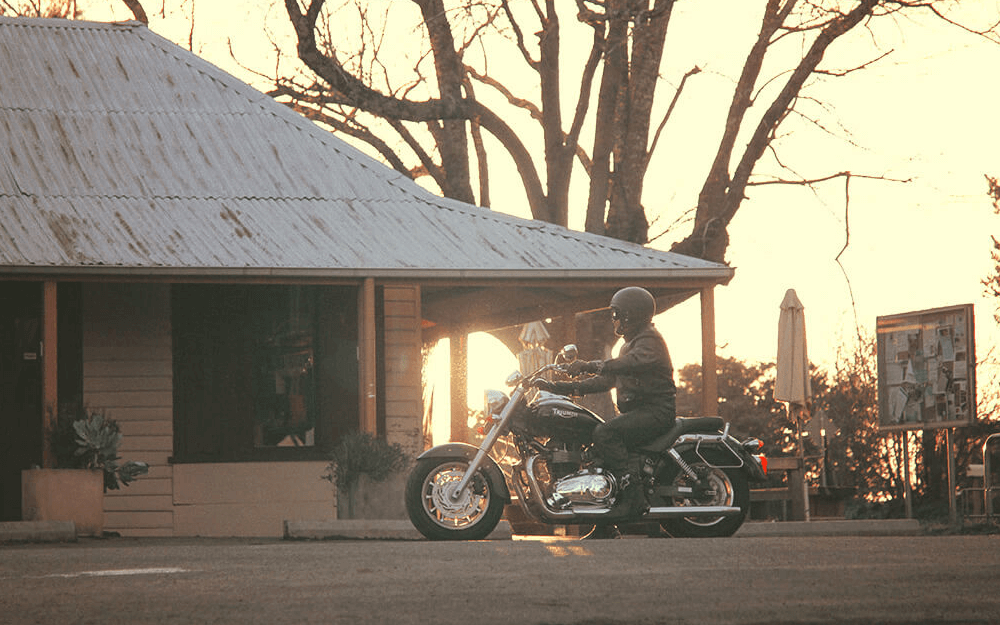
While the modern motorcycle is a sophisticated machine incorporating an array of technology, it is descended from extremely low-tech, two- and four-wheeled contraptions that would make contemporary motorbikes seem like wonders from science fiction.
The first machine classified as a “bicycle” was the penny-farthing in the 1870s, with a huge front wheel and small back wheel, which were capable of fast speeds but had the added danger of the rider falling from a great height. They were superseded in the 1880s by the “safety bicycle” – which is still the most common form of bicycle – with two wheels of equal size, pedals, a chain-driven gear train, and pneumatic tyres, which aided in comfort and safety.
It’s difficult to say, however, who invented the motorcycle, as many engineers throughout Europe were working on similar machines throughout the mid-1800s. One of the first types of bicycles powered by something other than legs was the Michaux-Perreaux steam velocipede, with a small steam engine attached to the bike. It was created around the same time as the Roper steam velocipede in Boston, Massachusetts, which featured a coal-powered steam engine; Roper died in 1896 while riding his steam bike.
In 1881, Lucius Copeland developed a small steam boiler attached to a bicycle, which could reach a top speed of 12mph. Four years later, Gottlieb Daimler and Wilhelm Maybach created the petrol-powered Reitwagen; Daimler (of the eponymous car company) is often referred to as “the father of the motorcycle.”
The Reitwagen employed a four-stroke internal-combustion engine designed by Nicolaus Otto, of whom Daimler had been an employee, and was often referred to as the “bone crusher”, after similar wooden-framed bicycles that had no suspension and therefore offered an incredibly jarring ride. Daimler and Maybach were relentless inventors, and Daimler later became one half of Daimler-Benz, the company now known as Mercedes-Benz.
After Daimler and Maybach’s invention, many other industrious people, in Europe and the US, began to develop similar powered bicycles, and in 1894, the German company Hildebrand and Wolfmüller established a production line for what were now called “motorcycles”. Four years later, Charles Metz became the first US-based producer of motorcycles, manufacturing the Orient-Aster, which was unveiled to the public at a race track in 1900, completing the five-mile (eight-kilometre) course in seven minutes.
As mass production became a more efficient and cost-effective means of manufacturing at the turn of the 20th century, many more companies either sprang up anew or turned their focus towards motorcycles. Royal Enfield, which had formerly produced bicycles and quadricycles in Redditch, Worcestershire, produced a 239cc motorcycle in 1901, and Triumph, a bicycle maker, offered its first motorcycle in 1902. After being saved from bankruptcy, Triumph has continued to produce motorcycles, making it the oldest manufacturer in ongoing production.
The US also became a major centre of production, with the Indian Motorcycle Manufacturing Company producing the “Indian Single” in Massachusetts in 1901, followed by Harley-Davidson in 1903 in Wisconsin. Both companies managed to survive the Great Depression, and despite changes of ownership and periods of instability, both still thrive to this day.
With the invention of more powerful and more reliable engines, motorcycle racing became increasingly popular, and many of the modifications instilled in these racing bikes soon found their way into the mass-produced motorcycles. During the 1920s, motorcycle racing went off-road, with dirt bikes first being produced by Siegfried Bettmann, who started Triumph in the 1880s. Many credit Soichiro Honda with influencing the development of dirt bikes due to his many modifications, made in part due to the increased demand for off-road motorcycles.
Since the 1800s, motorcycles have evolved from uncomfortable monstrosities with makeshift engines into machines of intense technological (and many would say, aesthetical) refinement. While pinpointing the exact moment when the motorcycle was born may be difficult, what can’t be denied is their importance to millions of riders throughout history and the world.
